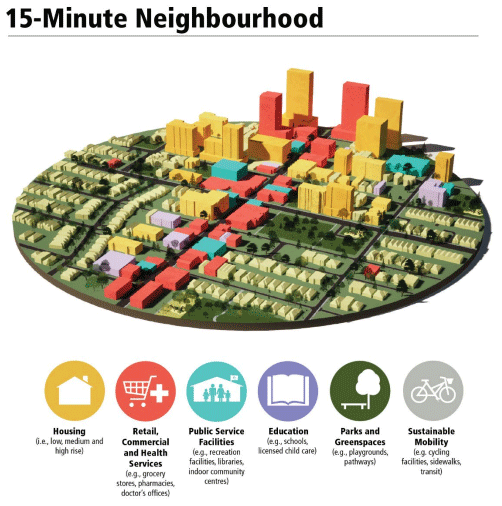grammin
Active Member
Hi, latest video uploaded to YouTube on future streetcar, to Villiers Island from Distillery District. Hope you enjoy it.
Not sure the word ’conquer’ resonates with all, but the concept of rapid transit leading to growth (and larger levels of economic activity) is sound.Where the streetcar goes, prosperity follows. Kind of like how the railways helped conquer the west back in the 1800s! This is great news.
There has been lots of discussion of this around here but the answer is 'yes' - decades away. The eventual aim is to create a second link to Leslie Barns along Commissioners as they are currently quite easily 'isolated' but this involves another bridge over the (new) Don. See this, for example, from WT and look at the QQE LRT ThreadOne has to be second guessing one's words these days doesn't one?
Meanwhile I'm also very pleased to hear about the streetcar line around the future Villiers island. What about all the way to Cherry beach and along Commisioners to Leslie? I suppose that's decades away!

Throughout the vast majority of my 33 years in public transit, one of the biggest challenges facing my various employers has been how to match insufficient capacity to ever-growing demand.
In my work for transit authorities in Sydney, Toronto and New York, one of our biggest headaches was figuring out how to squeeze ever more people into networks that were limited by fleet size and line capacity during ever-widening peak periods. Off-peak and weekend travel were also booming, fuelled by increasing urbanization, improvements in product offering and a shift away from the private car in an increasingly environmentally conscious world.
This transit renaissance developed over many years, with cities such as London and New York carrying record numbers of riders, enabling them to rely heavily on fare revenue to cover day-to-day expenses. Transport for London (TfL), more specifically the London Underground, was virtually at the point of break-even back in the halcyon days of 2019, a remarkable achievement born of booming ridership, tight cost control and targeted system expansion.
In both Toronto and New York, my focus was on enhancements to system capability across the various modes. Our plans included upgrades to signalling systems to enable trains to run closer together (thereby increasing the number of trains that could be run each hour), procurement of larger vehicles, expansion of vehicle-storage facilities and progressive (and expensive) enlargement of customer facilities such as subway stations, all designed to accommodate what seemed to be a limitless pipeline of new customers. Business cases were compelling and political support was (largely) forthcoming; we’d never had it so good.
And then came COVID-19.
Almost overnight, ridership collapsed as agencies scrambled to implement government directives to restrict transit usage to key workers, and customers stayed home to avoid perceived or actual infection risk.
London’s tube ridership dipped to levels not seen since Victorian times, a situation mirrored on the capital’s previously clogged streets and bridges. The financial impact was calamitous, as the risks of an overreliance on fare revenue became horribly apparent. Where most transit agencies enjoy a fare-box recovery ratio of around 40 per cent to 50 per cent (meaning the proportion of fares paid by riders compared with other sources of funding, such as subsidies), London was exposed to the tune of 72 per cent. That can work in good times, but the pandemic brought realization that such a model cannot withstand a major prolonged economic hit.
The previous challenge of how to match insufficient capacity with excess demand was reversed. Where marketing efforts previously tried to encourage ridership outside the peak, campaigns now need to win riders back. In London, Toronto and New York, ridership is recovering as the pandemic and its associated restrictions recede, but there is still a major shortfall from the previous norm – and some evidence suggests patronage will never get back to its previous highs. The work-from-home genie is proving hard to force back into its bottle.
This all comes at huge cost. One of my main priorities as commissioner of TfL was to secure government support to keep the organization going while we worked on changing the funding model to one that reflected the new reality and reduced exposure to future economic shocks. We successfully secured £6-billion ($9.6-billion) in funding through arduous negotiation with central government, but it came with conditions that honed in on costs and commitment to structural reform. It was never easy to persuade government to support transit, but that job became exponentially harder.
Good to see that Metrolinx finally finished re-roofing this old 'signal box' - of course the next thing is that it needs to be moved several hundred meters east to allow for the extension of the Cherry Street streetcar line.They removed all the scaffolding from this guy… time to move it over for the streetcar pass-through.View attachment 457411View attachment 457412
Congrats on all your featured posts last week !Our 20 year view was okay but a little disjointed now. This is the only unobstructed portion left.
View attachment 457711
in this diagram it looks like the Cherry streetcar travels north of King to Queen (along Sumach). is this accurate?There has been lots of discussion of this around here but the answer is 'yes' - decades away. The eventual aim is to create a second link to Leslie Barns along Commissioners as they are currently quite easily 'isolated' but this involves another bridge over the (new) Don. See this, for example, from WT and look at the QQE LRT Thread
View attachment 457385